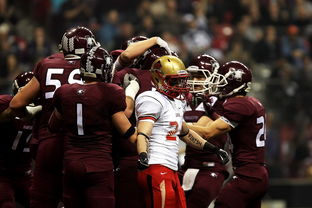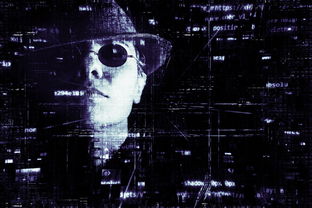Vietnam is a nation with a rich and diverse culture, deeply influenced by its historical experiences, religious beliefs, and social values. In this article, we will explore the various facets of Vietnamese culture, from its traditions to its modern expressions.
Traditions and Festivals
Tet Nguyen Dan (Lunar New Year)
The Tet Nguyen Dan, also known as Lunar New Year or simply Tet, is the most significant celebration in Vietnamese culture. It marks the start of a new year on the lunar calendar and is observed in January or February. This festival is not just about celebrating the change of seasons; it's a time for family reunions, feasts, and honoring ancestors. Homes are meticulously cleaned, new clothes are worn, and people exchange traditional greetings such as "Chuc Mung Nam Moi" (Happy New Year). The atmosphere is filled with joy and the scent of Banh Chung, a square cake made from glutinous rice, mung beans, and pork, symbolizing the land, sky, and humanity.
Mid-Autumn Festival (Tet Trung Thu)
This festival is celebrated on the 15th day of the eighth month in the lunar calendar, around September or October. It's primarily a children’s holiday, marked by lantern processions and mooncakes. Children play games and sing folk songs, creating a vibrant and cheerful atmosphere. Mooncakes, which come in both sweet and savory flavors, are shared among families, symbolizing unity and prosperity. The round shape of the mooncakes mirrors the full moon, which is believed to be particularly bright and beautiful during this time.
Religion and Beliefs
Confucianism
Confucianism, originating from China, has deeply influenced Vietnamese society. It promotes virtues like respect for elders, loyalty, and education. In daily life, many Vietnamese practice filial piety, showing deep reverence for their parents and ancestors. Ancestral altars are common in Vietnamese homes, where offerings are made regularly, especially during Tet. These practices reflect the strong emphasis on family and community ties, which are central to Vietnamese cultural identity.
Buddhism
Buddhism, introduced during the Chinese occupation and later spread by Indian monks, is another major religion in Vietnam. The practice of Buddhism emphasizes the Four Noble Truths and the Eightfold Path, teaching followers how to live a life free from suffering. Many Vietnamese visit pagodas and temples to seek blessings, make offerings, and participate in religious ceremonies. The architecture of these places often features intricate carvings, colorful murals, and serene courtyards, providing a tranquil retreat from the hustle and bustle of everyday life.
Cao Dai and Hoa Hao
These two indigenous religions emerged in the early 20th century. Cao Dai is a syncretic religion that combines elements of Christianity, Taoism, Buddhism, and Confucianism. Its beliefs center around the concept of God manifesting in different forms throughout history. Hoa Hao, founded by Huynh Phu So, focuses more on personal piety and the simplicity of Buddhist teachings. Both religions have gained significant followings in certain regions of Vietnam, adding to the country's spiritual diversity.

Cuisine
Vietnamese cuisine is renowned for its fresh ingredients, delicate flavors, and artistic presentation. Rice and noodles form the staple carbohydrates, while fish sauce, shrimp paste, and various herbs provide the characteristic taste profiles. Popular dishes include:
Pho: A noodle soup served with beef or chicken broth, garnished with herbs, bean sprouts, lime, and chilies.
Bun Cha: Grilled pork patties served with cold rice noodles and fresh vegetables, accompanied by dipping sauce.
Banh Mi: A crusty baguette stuffed with pickled vegetables, pâté, and grilled meats, reflecting the French influence on Vietnamese cuisine.
Spring Rolls: Fresh or fried rolls wrapped in rice paper, filled with shrimp, pork, vegetables, and herbs.
Language and Literature
Vietnamese Language
Vietnamese is the official language and is spoken by nearly 100% of the population. It uses the Latin alphabet with additional diacritical marks to denote tones, making it distinct from other languages. Written Vietnamese evolved from Chinese characters during the Tang dynasty and was standardized using the Latin alphabet after the French colonization in the late 19th century.
Literary Works
Vietnamese literature reflects both traditional and contemporary themes. Classical works like "Truyen Kieu" (The Tale of Kieu) by Nguyen Du narrate tragic love stories intertwined with moral lessons. Modern literature often explores social issues and personal narratives. Writers like Nguyen Ngoc Huy and Duong Thu Huong have gained recognition for their bold explorations of war trauma and societal changes. Vietnamese literature is increasingly being translated into English and other languages, fostering international appreciation and understanding of Vietnamese cultural expression.
Art and Music
Visual Arts
Traditional Vietnamese art includes woodblock prints, lacquer paintings, and silk paintings. Woodblock prints often depict scenes from everyday life, landscapes, or historical events. Lacquer paintings involve applying layers of resin and pigments to create glossy, colorful surfaces. Silk paintings showcase detailed brushwork and vivid colors, often featuring subjects like landscapes, animals, or portraits. Contemporary Vietnamese artists blend traditional techniques with modern concepts, pushing boundaries and creating innovative pieces that capture global attention.
Traditional Music
Traditional music in Vietnam encompasses a variety of forms, such as chamber music, court music, and folk music. Instruments like the dan tranh (16-string zither), dan bau (monochord), and đàn nhị (two-string fiddle) are integral to these genres. Folk songs like "Quan Ho," performed in duets, tell stories of love, labor, and rural life. Modern music has also flourished, with popular singers like Lam Phuong and My Linh gaining fame both domestically and internationally.
Fashion and Clothing
Traditional Attire
Ao Dai is perhaps the most recognizable element of Vietnamese traditional attire. This elegant long robe with slits on both sides is worn over wide-legged pants. Made from soft fabrics like silk or cotton, ao dai comes in various designs and colors, often adorned with intricate patterns. It symbolizes femininity and grace but can also be adapted for men. Women wear ao dai during special occasions like weddings, festivals, or traditional ceremonies, embodying cultural pride and heritage.
Contemporary Fashion
In recent years, Vietnam's fashion industry has seen significant growth, driven by rising economic prosperity and global influence. Young designers are incorporating traditional elements into modern outfits, creating a unique fusion aesthetic. Streetwear brands like "The Tusk" and "Peace Tree" offer trendy apparel that appeals to younger generations while maintaining connections to local traditions. High-profile events like the Vietnam International Fashion Week showcase the talents of both emerging and established designers, presenting collections inspired by diverse influences ranging from nature to urban landscapes.
Architecture
Historical Sites
Vietnamese architecture showcases a harmonious blend of Eastern and Western styles. Ancient structures like the One Pillar Pagoda in Hanoi, built in the 11th century, feature elaborate wooden frameworks and Buddhist motifs. Hue, the former imperial capital, boasts grand palaces and tombs that illustrate the opulence of the Nguyen Dynasty. Colonial buildings, including government offices and hotels in cities like Saigon (Ho Chi Minh City), reflect French architectural influences with their neoclassical facades and spacious interiors.
Modern Developments
Today, Vietnam's skyline is rapidly changing with skyscrapers, shopping malls, and residential complexes. Iconic landmarks like Bitexco Financial Tower in Ho Chi Minh City, with its distinctive conical shape, exemplify contemporary architectural innovation. Urban planners aim to balance modern functionality with environmental sustainability, integrating green spaces and eco-friendly materials. These developments highlight the nation's ongoing journey towards modernization while preserving its rich cultural legacy.
Conclusion
Vietnamese culture is a vibrant tapestry woven from centuries of history, diverse influences, and resilient traditions. From the joyous celebrations of Tet to the subtle nuances of Confucian ethics, from the aromatic dishes of pho to the melodic strains of traditional music, every aspect of Vietnamese life embodies a unique charm. As Vietnam continues to evolve, its people carry forward the essence of their heritage, ensuring that the spirit of their ancestors lives on in the heart of a thriving modern nation.
*Nota:* Este texto foi originalmente escrito em inglês e traduzido para o vietnamita para atender à sua solicitação.









